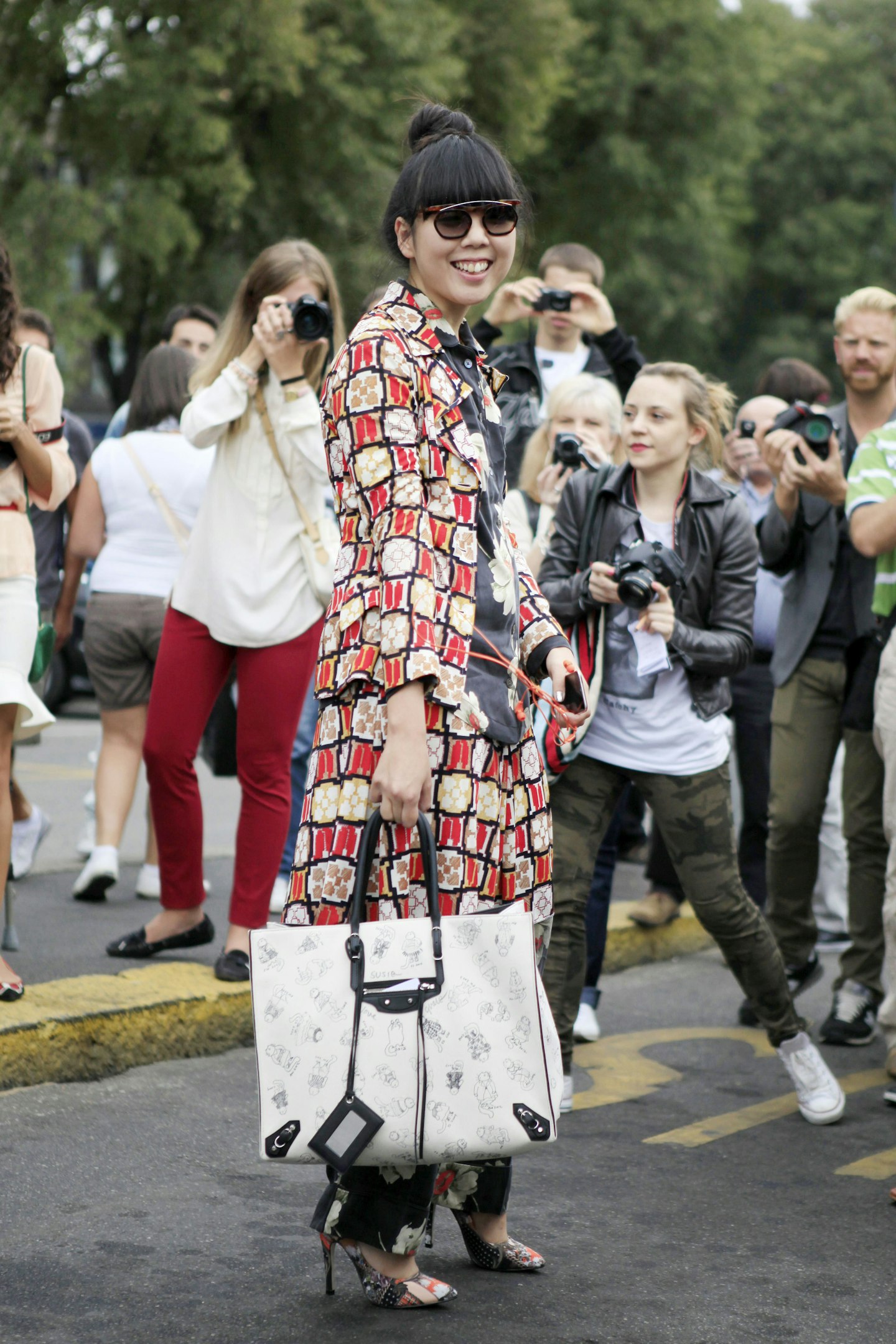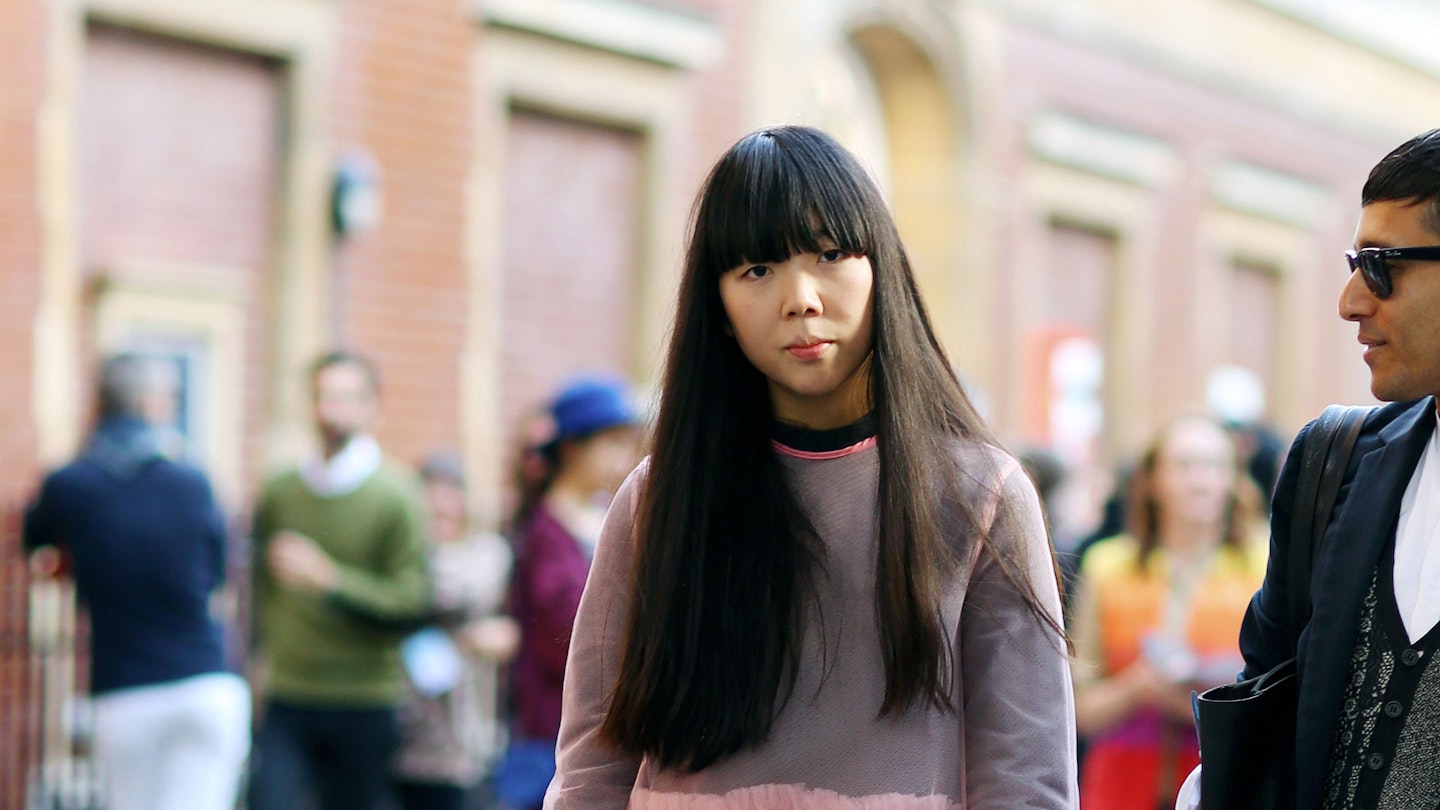‘Pathetic’, ‘Desperate’, ‘Note to bloggers who change head-to-toe, paid-to-wear outfits every hour: please stop. Find another business. You are heralding the death of style.’
These were some of the choice words that were flung about by four American Vogue.com editors back in September last year in an online article which was meant to be a discussion about the shows in Milan. They weren’t words that were directed at me per se. And yet, as a seasoned fashion blogger looking back at 10 years of this to-and-fro uneasy relationship between the print and digital worlds, something snapped.
Upon the publication of the article, I intuitively retaliated in a series of tweets that pointed out the hypocrisy of such comments, which are ultimately counterproductive to a fashion landscape, that has changed irreparably. Cue a brief yet intense media storm of opinion pieces from the likes of David Mitchell and Giles Coren on what was perceived to be a bitchy fight between blogger v editor, with other high-profile fashion bloggers and influencers similarly weighing in with their own opinions and a hub of discussion among editors and showgoers that continued on into Paris Fashion Week.
With some distance between that fracas a few months back and the optimistic beginnings of a new year, I can finally reflect and reason in more than 140-character bursts. It’s somewhat of a cathartic exercise to extract the negative connotations away from the role of a fashion blogger. Or digital content creators. Or influencers. That last tag raises eyebrows and, admittedly, isn’t where I saw the path of fashion blogging winding up at, when I started Style Bubble a decade ago. And yet, despite my own misgivings over the authenticity and commercial monetisation, on the part of what American law professor and author Tim Wu refers to as ‘attention merchants’, there’s an ultimate ray of positivity that can’t be diminished. The way we – and by we, I mean anyone with an internet connection and a device – get to participate and interact with fashion has changed fundamentally for the better.

The trajectory from bedroom blogging to the Instagram influencer of today goes something like this. Fashion bloggers 1.0 like myself, Bryanboy and Scott Schuman of The Sartorialist found our niches in the mid-noughties, interacting with like-minded communities and egging each other on in our sideline blogging ambitions. It felt renegade to write, take photos of ourselves and represent fashion in the way that we liked, for a growing audience that was beginning to splinter off from reading mainstream print media. Not long after, brands began to cotton on to the cachet of these lone voices. Thus began a rapid spiral where bloggers were thrust into the spotlight, profiled in the media and integrated into the fashion industry with their increased presence on the FROW and their increasingly overt commercial alliance with fashion brands.
The relationship between mainstream print media and fashion blogging also began its own up-and-down flirtation, with one borrowing from the other in order to up the digital ante. I was fortunate enough to work for style title Dazed as commissioning editor of their website, but the truth is those positions and opportunities are few and far between. It’s no wonder that influencers – the girls parading outside fashion shows – have multiplied at a rabid rate. It’s their ability to create their content freely on easy-to-access platforms with a potential rate of return which is alluring.
Today the business of fashion blogging is an industry in itself, evident in the number of agencies representing an ever-growing gaggle of influencers (blogger is so 2006...), with set rate cards that dictate a fee per sponsored Instagram post or tweet from every willing brand. The more followers you have, the higher the earning potential, with the upper tier of bloggers such as Chiara Ferragni of The Blonde Salad or Aimee Song @songofstyle, with their millions of followers, commanding up
to $50,000 an Instagram post.
The kudos for brands is measurable and favourable. According to a recent retail conference in New York, 92 percent of consumers look to social media to influence their shopping decisions, while some influencers claim that one Snapchat post could shift $20,000 worth of merchandise for a skincare brand. On a more intangible level, it’s the personal experiences of these influencers that add an alternative spin to what is essentially advertising and sponsored content. These individuals are opening up windows into aspirational lifestyles that feel relatable – and that has garnered its own commercial worth.
The point I made in my quick-fire tweets is that today, there is little to differentiate between the business model of a print publication and that of an influencer, excepting the fact that often these women (and a few men) represent themselves solely, taking on the role of editor-in-chief, art director, stylist, model, sometimes photographer and writer into a multitasking one-person show, building mini empires from scratch. A handful have become brands, with clothing and accessories lines, adding designer and creative director to their bows.
The days of an elect group of power players in an ivory tower dictating hemlines are over. Let’s celebrate the fact that at the click of a heart-shaped icon, you can propel unexpected fashion capitals, independent designers and alternative style movements
I would be lying if I said I’ve never been critical of the commercial aspect of fashion blogging, in so much that it has possibly created homogenisation in the type of influencer that rises to the top. This cream of the Instagram crop can sometimes ring hollow when you’re scrolling through post after post of sponsored content. In considering partnerships with brands, ‘synergy’ is something I have to think about in order to maintain control over content. There’s also the enjoyment factor – writing a blog post or creating images for socials for the pure satisfaction of the task, is something I always want to hold on to.
Despite the commercialisation of fashion blogging, I would still celebrate the movement as a positive whole. From the privileged women running million- dollar blogging empires to anyone getting started with Instagram and YouTube channels – it’s all contributed to a diversification and democratisation in the ways we’re inspired to dress and express ourselves. When you hap across blogging voices that up representation of different ethnicities, social backgrounds and body sizes in fashion, it’s a fist-pumping moment of progress that wouldn’t have existed if the internet hadn’t come along. When a blogger with a penchant for rainbow-coloured hair and My Little Pony pastel clothes can garner thousands of likes on Instagram, she’s empowering others to step outside of their style boxes. When people buy a voluminous-sleeved dress as seen on Leandra Medine of Man Repeller, it’s a style decision that might not have happened if they had seen it in print. It’s the encouragement of people trying fashion on for size and using it as a means of expression that I take heart from.

On a personal level, with my modest – in the ‘super blogger’ context – 323k Instagram followers (not that I’m counting...), this numbers game hasn’t worn me down. Because I’ve been lucky enough to enjoy a decade of exploring fashion on my own terms. I’ve been able to see fashion in all its glory, travelling to far-flung destinations to find style scenes springing up everywhere from New Delhi to Mexico City. I’ve seen the rise of many talented designers from the beginning of their careers, and I supported their work by putting my money where my mouth is and not just writing about it, but wearing it too. It still gives me satisfaction when a reader buys an item or a store decides to stock a designer because of my blog.
And despite the fact that today I’m fortunate enough to attend fashion shows and events as both a blogger and a writer for print publications, that feeling of being an outsider peering in will never quite disappear. I will always remember those early days of queuing to see Gareth Pugh’s first shows in London. Onlookers probably lobbed thoughts of ‘pathetic’ and ‘desperate’ at me back then. They might still do today. I wear the badge of fashion blogger with pride because I wouldn’t have been able to work in fashion the way I have done in the last 10 years without taking that initial leap of faith in putting myself out there online.
Looking at the bigger picture, this ongoing frosty impasse between the old guard and the new wave is irrelevant in the wider scheme of things. The reader, the consumer or the fashion lover out there will be the real decider. Their choices in how they wish to be inspired have never been broader. We – the magazines, the editors, the influencers – are all conduits of information, selling fashion’s lofty ideas and fantasies, as well as tangible clothes to get excited about in that particular moment. How and where that process happens will continue to evolve. The days of an elect group of power players in an ivory tower dictating hemlines are over. Let’s celebrate the fact that at the click of a heart-shaped icon, you can propel unexpected fashion capitals, independent designers and alternative style movements and bring about changes that make the fashion world a constantly compelling one.
READ MORE: Meet The Model Of The Moment Adwoa Aboah
READ MORE: Why Instagram Live Is Set To Be The Biggest Trend At London Fashion Week
